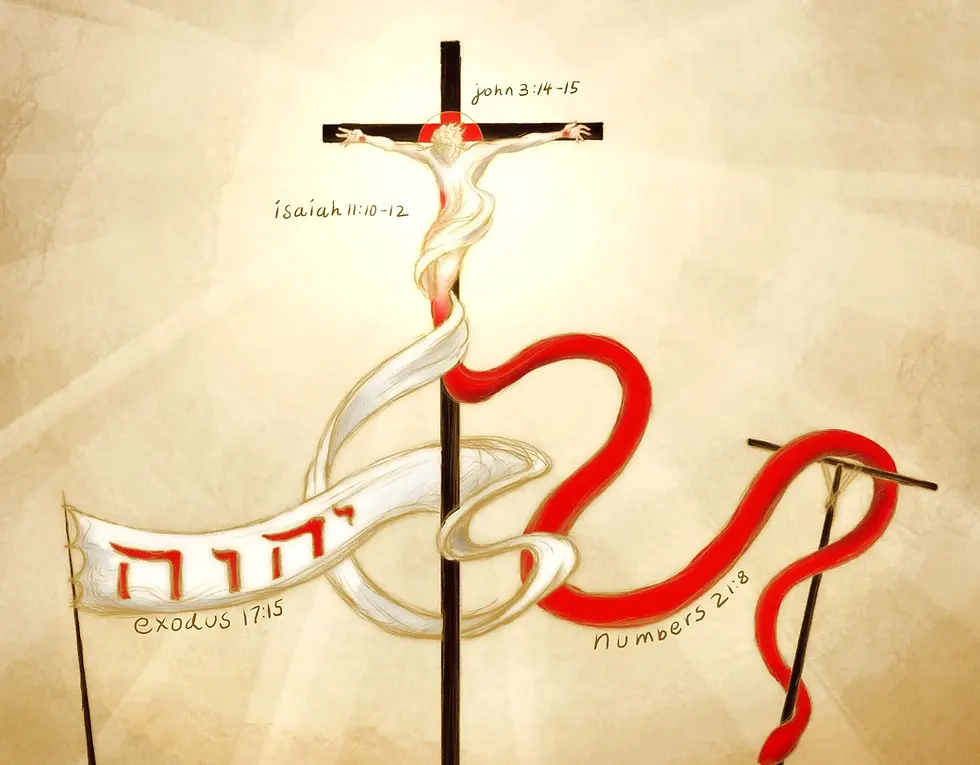METAXY, MYSTERY, & THE MUNDANE
- Charles
- 5 août 2023
- 4 min de lecture
Reflections on the Feast of the Transfiguration of the Lord: Daniel 7:9-10, 13-14, 2 Peter 1:16-19, & Matthew 17:1-9 [ 05 August 2023 ]

An old joke goes: what is the difference between a terrorist and a liturgist? You can negotiate with a terrorist. Our conversations about right and wrong worship seem to revolve around questions like which language to use, what is the appropriate gesture, which rite is the ‘original’ one, which side should the priest face, etc., We certainly cannot belittle the importance of gestures, liturgical norms, and the value of liturgical pluralism. At the same time, the scope of our reflection on liturgy should maybe transcend the simplistic polemic between legalism (in the guise of discipline) and callousness (in the name of creativity) to include a rather crucial question: How can our participation in the liturgy help transfigure our personal, ecclesial and social lives? Today’s feast of the Transfiguration of the Lord helps us discern a response through its three-fold movement:
1. Liturgy is an ascension to metaxy: Metaxy (Greek for “in-between”) is a philosophical category employed in the Greek tradition (Plato’s Symposium), modern philosophies (Eric Voegelin, Simone Weil, etc.,) and theological circles (from East Orthodox circles to Richard Niebuhr). Voegelin would define the metaxy as our permanent in-between place in which we experience diverse and opposing tensions like immanence and transcendence or mortality and immortality (Order and History, 2000). Mountains in Matthew’s Gospel are treated as “metaxy” spaces that are key not only to the Gospel’s narratives and structure but also to the identity of Jesus. Jesus delivers the Sermon on the Mount (5:1); he goes to pray to ‘the mountain’ (14:23); he heals the sick on ‘the mountain’ (15:29); he transfigures on “a high mountain” (17:1); and commissions the disciples to go proclaim his message on a mountain (28:19-20).

In all these instances, mountains enable people to experience Jesus as the metaxy, the in-between space between divinity and humanity, the immediate and the ultimate, the transcendent and the immanent. On the mount of the Transfiguration, Jesus holds the disciples suspended between heaven and earth. Matthew’s mountain episodes of prayer, preaching, healing, transfiguration, and the sending of the apostles all become moments par excellence of the descent of heaven and the ascent of the earth in Jesus. The purpose of our participation in the liturgy is to ascend this mountain of the experience of Jesus as the metaxy and relish the resulting privileged moments of closeness with God, communion with each other, the revelation of God and His will, and the re-discovery of our past, present, and future.
2. Liturgy is a doorway to the mystical theophanies: On the mount of Transfiguration, as Jesus was transfigured, a mystery unveils itself before the eyes of the disciples. His face shone like the sun and his clothes became white as light. The disciples are initiated into a moment of admiration and contemplation of the mystical divinity that manifests itself to them. Liturgies are potential moments of this mystical theophany experience. Liturgy enables us to open our lives to the mystery of today’s theophanies in the sacred species of bread and wine (Eucharist), in the body of Christ (Church), in the signs of our times (discernment), and in our daily Christian living (Evangelisation). How do we discover this mystery in our liturgy? The clue is in the Gospel.

We see Jesus conversing with Moses, who gave the law and Elijah, the greatest of the prophets. Together, they represent the law (Torah) and the prophets (Neb’im), which together constitute the central core of the Jewish scripture. When the disciples overcome their fear and raise their eyes, “they see no one else but Jesus alone”. The law and the prophets find their fulfilment in Jesus (5:17). So the voice from the cloud (Second reading and Gospel) continues to echo today: "This is my beloved Son.. listen to him". The Scripture is, therefore, not just a record of the Word of God from the past. In the liturgy, it becomes our gateway to the discovery of the daily mystical visions of God’s theophanies in and through our daily life situations, people, and events.
3. Liturgy is a descension to the mundane mission: Is descension even a word? Yes, it is and more. It is an invitation to participate in the mission of Jesus’s march to Jerusalem. Peter is so enamoured by the Transfiguration experience that he wants to set camp and so proposes building three tents. His proposal evokes the Jewish tradition of living in a sukkah for a week every year during the Festival of Booths (Leviticus 23:33-44). He wants the prolong the retreat on the mountain, his metaxy experience. However, Jesus was determined to continue his mission of the passion which awaited him. He knew that the glory of the Transfiguration is soon to be followed by the cruelty of his disfiguration.

Jesus challenges his disciples to move from the stagnancy of the tent to the dynamism of the way of the cross: “If any of you wants to be my follower, you must give up your own way, take up your cross, and follow me” (Matthew 16:24). Transfiguration is not complete without the descent to ordinary everyday life, the return to the mundane tasks and responsibilities of our everyday routines for it is through them God accomplishes his redemptive mission. Liturgy transforms our lives into meeting places between the metaxy and the mundane: in the bread and wine (Eucharist); the listening to the Word, the body of Christ (Church), the signs of our times (discernment), and our daily Christian living (Evangelisation). May our ascent to the experience of Jesus as our metaxy empower us to convert our mundane lives into God’s mission fields and thus help the transfiguration of our Church and societies.




Commentaires